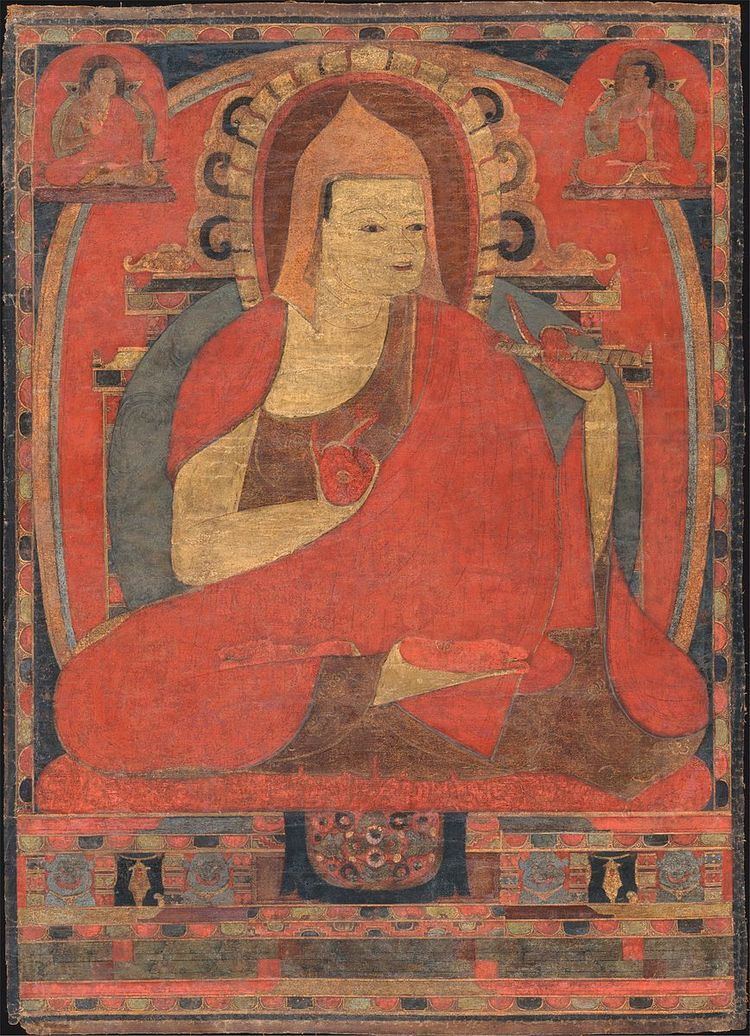Occupation Buddhist teacher Name Atiśa Atiśa | Religion Buddhism | |
 | ||
Known for The major figure in the establishment of the Sarma lineages in Tibet. | ||
Atisa wangu abana ba nasery
Atīśa Dīpaṃkara Śrījñāna (Bengali: অতীশ দীপংকর শ্রীজ্ঞান; Standard Tibetan: ཇོ་བོ་རྗེ་དཔལ་ལྡན་ཨ་ཏི་ཤ།; Chinese: 燃燈吉祥智; pinyin: Rándēng Jíxiángzhì) (982 - 1054 CE) was a Buddhist Bengali religious leader and master. He was one of the major figures in the spread of 11th-century Mahayana and Vajrayana Buddhism in Asia and inspired Buddhist thought from Tibet to Sumatra. He is recognised as one of the greatest figures of classical Buddhism, and Atisa's chief disciple Dromtön was the founder of the Kadam School. Atisa is also considered to be a key figure in the establishment of the Sarma schools of Tibetan Buddhism.
Contents
- Atisa wangu abana ba nasery
- Atisa mind driving
- Palace life
- Studies
- Preaching in Sumatra and Tibet
- Writings
- References
Atisa mind driving
Palace life

Bikrampur, the most probable place for Atiśa's birthplace, was the capital of the Pala Empire as it had been of the ancient kingdoms of southeast Bengal. Though the city's exact location is not certain, it presently lies in the Munshiganj District of Bangladesh, and continues to be celebrated as an early center of Buddhist cultural, academic, and political life. Similar to Gautama Buddha, Atiśa was born into royalty. His father was a king known as Kalyana Shri and his mother was Shri Prabhavati. One of three royal brothers, Atiśa went by the name of Candragarbha during the first part of his life. In fact, it was not until he traveled to Guge and encountered King Jangchup Ö (Wylie: byang chub 'od, 984–1078) that he was given the name Atiśa.
Studies
According to Tibetan sources, Atiśa was ordained into the Mahāsāṃghika lineage at the age of twenty-eight by the Abbot Śīlarakṣita and studied almost all Buddhist and non-Buddhist schools of his time, including teachings from Vaishnavism, Shaivism, Tantric Hinduism and other practices. He also studied the sixty-four kinds of art, the art of music and the art of logic and accomplished these studies until the age of twenty-two. Among the many Buddhist lineages he studied, practiced and transmitted the three main lineages were the Lineage of the Profound Action transmitted by Asaṅga and Vasubandhu, the Lineage of Profound View transmitted by Nagarjuna and Candrakīrti, and the Lineage of Profound Experience transmitted by Tilopa and Naropa. It is said that Atiśa had more than 150 teachers, but one key one was Dharmakīrtiśrī.
Preaching in Sumatra and Tibet
Tibetan sources assert that Atisa spent 12 years in Sumatra and he returned to India in 1025 CE which was also the same year when Rajendra Chola I of the Chola dynasty invaded Sumatra. Atiśa returned to India. Once back, the increasingly knowledgeable monk received much attention for his teachings and skills in debate and philosophy. On three separate occasions, the monk Atiśa was acclaimed for defeating non-Buddhist extremists in debate. When he came into contact with what he perceived to be a misled or deteriorating form of Buddhism he would quickly and effectively implement reforms. Soon enough he was appointed to the position of steward, or abbot, at Vikramashila established by Emperor Dharmapala.
Atiśa's return from Suvarnabhumi, where he had been studying with Dharmakīrtiśrī, and his rise to prominence in India coincided with a flourishing of Buddhist culture and the practice of Buddhism in the region, and in many ways Atiśa's influence contributed to these developments. According to traditional narratives, King Langdarma had suppressed Buddhism's teachings and persecuted its followers for over seventy years. According to the Blue Annals, a new king of Guge by the name of Yeshe-Ö sent his academic followers to learn and translate some of the Sanskrit Buddhist texts. Among these academics was Nagtso, who was eventually sent to Vikramashila to study Sanskrit and plead with Atiśa to come teach the Dharma in his homeland. At Ngari, he was very impressed with the king's request for "a teaching of the people […] had [Atiśa] been asked for advanced empowerments into tantric deity systems […] he would have been far less pleased". It was during the three years Atiśa spent in this town that he compiled his teachings into his most influential scholarly work, Bodhipathapradīpa, and encountered the disciple forecast by Tārā, Dromtön. It was this disciple who furthered Atiśa's work after he died.
According to Jamgon Kongtrul, when Atiśa discovered the store of Sanskrit texts at Pekar Kordzoling, the library of Samye, "he said that the degree to which the Vajrayana had spread in Tibet was unparalleled, even in India. After saying this, he reverently folded his hands and praised the great dharma kings, translators, and panditas of the previous centuries."
Writings
Following are his most notable books:
